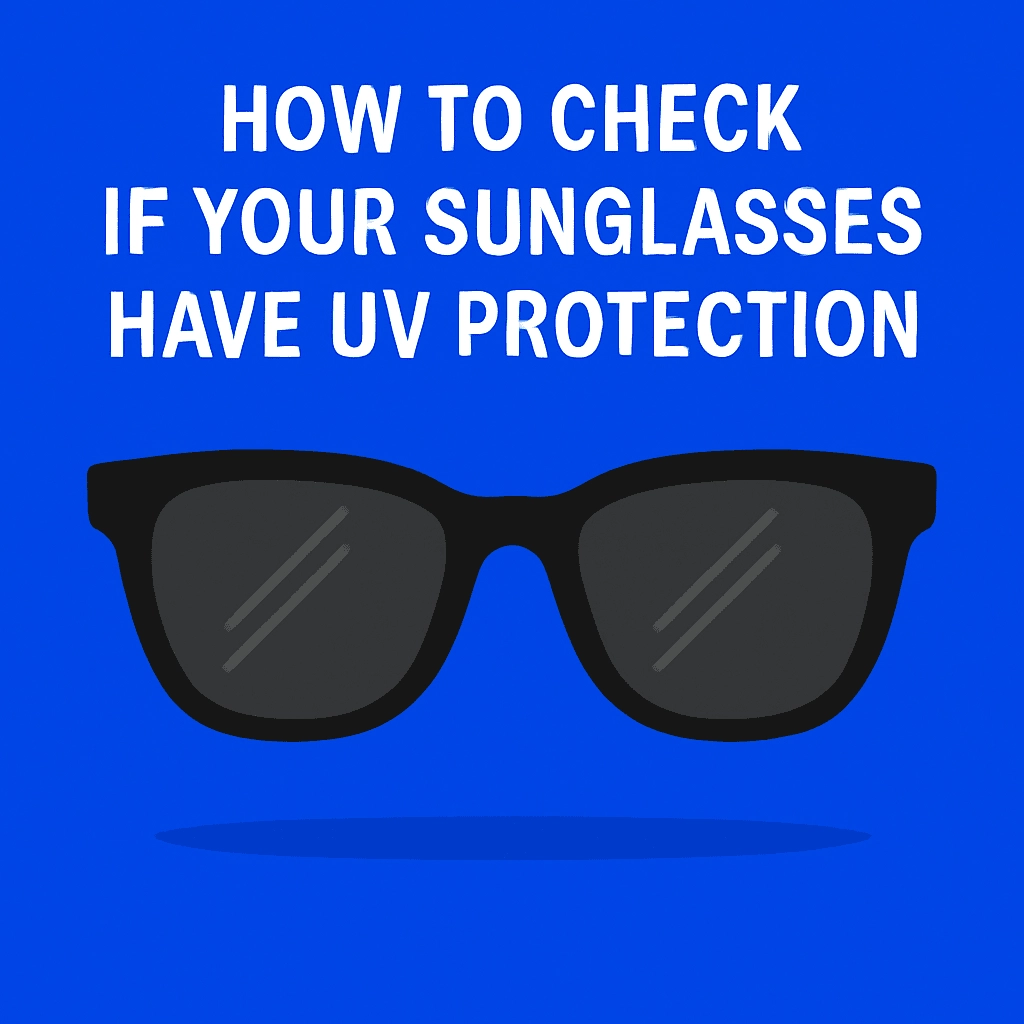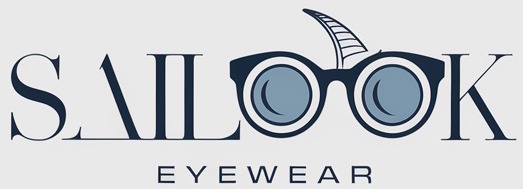UV protection in sunglasses is essential for safeguarding your eyes from harmful ultraviolet (UV) rays that can cause permanent damage to your vision. But here’s the kicker—many people wear sunglasses without realizing that not all sunglasses offer UV protection. This article explains everything you need to know about UV protection in sunglasses, how to identify it, and why it’s important for your health. With the right knowledge, you can confidently choose sunglasses that will keep your eyes safe from harmful UV rays.

1. What is UV Protection in Sunglasses?
UV protection in sunglasses refers to the ability of the lenses to block ultraviolet (UV) radiation, a type of light that can cause significant harm to the eyes over time. UV radiation is invisible to the human eye, but its effects are far-reaching. Prolonged exposure can lead to cataracts, macular degeneration, and even eye cancer. The primary function of UV-protective sunglasses is to shield the eyes from these harmful rays, thereby reducing the risk of eye damage.
There are three types of UV rays: UVA, UVB, and UVC. UVA rays penetrate deep into the skin and eyes, contributing to aging and increasing the risk of eye diseases. UVB rays are the primary cause of sunburn and also contribute to eye damage. UVC rays, although the most harmful, are mostly absorbed by the Earth’s ozone layer and don’t reach the surface. That said, sunglasses that block both UVA and UVB rays are essential for optimal eye protection.
But here’s the kicker: not all sunglasses are made equal when it comes to UV protection. Even if a pair of sunglasses looks stylish or expensive, they may not provide adequate UV protection. That’s why it’s crucial to check for proper UV blocking before purchasing sunglasses.
Table 1: UV Protection Types
| UV Type | What It Does |
|---|---|
| UVA | Deep penetration, causes aging, increases the risk of eye diseases |
| UVB | Causes sunburn, contributes to eye damage |
| UVC | Most harmful but absorbed by the ozone layer |
2. How Can You Identify UV Protection in Sunglasses?
Knowing how to identify UV protection in sunglasses can be the difference between protecting your eyes and leaving them vulnerable. The most straightforward way to check if sunglasses offer UV protection is by looking for labels such as “UV400” or “100% UV Protection.” These labels indicate that the lenses block 99% to 100% of UV rays, including UVA and UVB rays.
Some sunglasses may include additional markings, such as “UV 380,” indicating protection against UVA rays but not UVB. However, the UV400 label is generally the best indicator of complete protection.
What’s the real story? The absence of these markings or vague labels like “fashion sunglasses” or “UV protected” can mean the sunglasses provide little to no protection. Always opt for sunglasses with a reputable UV protection label, and when in doubt, consult the manufacturer’s details.
Table 2: UV Protection Labels
| Label | What It Means |
|---|---|
| UV400 | Blocks 99%-100% of UVA and UVB rays |
| UV100% | Provides 100% protection against UV radiation |
| UV380 | Protects against UVA rays only |
3. What Are the Different UV Protection Standards?
There are various standards for UV protection in sunglasses, and these standards can vary by region. In the United States, sunglasses must meet the American National Standards Institute (ANSI) Z80.3 standard, which ensures that lenses block at least 99% of UV radiation. Similarly, in Europe, the CE marking indicates that the sunglasses meet safety regulations and provide adequate UV protection.
But here’s the kicker: the presence of a UV protection label does not always guarantee high-quality protection. Some sunglasses may meet the bare minimum requirements, while others exceed them. Higher-end brands often go beyond the standard, offering added features like polarized lenses, scratch-resistant coatings, and better durability.
You might be wondering: are these higher-end sunglasses worth the price? The short answer is yes—especially if you’re looking for long-lasting protection and enhanced visual comfort.
Table 3: UV Protection Standards
| Standard | Region | UV Protection Level |
|---|---|---|
| ANSI Z80.3 | USA | 99% UV protection |
| CE Marking | Europe | Meets safety regulations, varies by product |
4. How Do Sunglass Lenses Block UV Rays?
Sunglass lenses block UV rays through the use of specific materials and coatings. Most modern sunglasses are made from materials such as polycarbonate, which naturally blocks UV rays. Other materials like glass or acrylic may require additional coatings to provide UV protection.
What’s the real story? Some lenses come with a special UV-blocking coating that enhances their ability to protect your eyes from harmful rays. This coating is often transparent and doesn’t affect the appearance of the lenses, but it’s crucial for ensuring that the lenses provide adequate UV protection. Look for lenses that have been treated with UV-blocking technology, as these will offer superior protection.
Table 4: Lens Materials and UV Protection
| Lens Material | UV Protection |
|---|---|
| Polycarbonate | Naturally blocks UV rays |
| Glass | Requires additional UV coating |
| Acrylic | Requires additional UV coating |
5. Can Polarized Sunglasses Provide UV Protection?
Polarized sunglasses are designed to reduce glare from reflective surfaces like water, snow, or roads. They work by filtering out horizontal light waves that cause glare, improving visibility and comfort in bright conditions.
But here’s the kicker: polarized sunglasses do not automatically provide UV protection unless specifically designed to do so. While polarization helps reduce glare, it doesn’t block UV rays. Therefore, it’s crucial to choose polarized sunglasses that also feature UV protection.
What’s the real story? Polarized sunglasses with UV protection offer the best of both worlds—enhanced visual clarity and protection from harmful rays.
Table 5: Polarized vs UV Protection
| Feature | Polarized | UV Protection |
|---|---|---|
| Reduces glare | Yes | Yes (if labeled) |
| Blocks UV rays | No | Yes (if labeled) |
6. How to Test Your Sunglasses for UV Protection at Home?
Testing sunglasses for UV protection at home is easy and can be done with simple tools. One common method is the UV test card, a tool that changes color when exposed to UV light. Simply hold the sunglasses over the test card and observe any changes in color. If the card changes color, it means the sunglasses are blocking UV rays.
What’s the real story? DIY testing methods are convenient but not always foolproof. For the most accurate results, consider taking your sunglasses to an optician or using a professional UV meter.
Table 6: DIY UV Protection Test
| Method | What You Need | Result |
|---|---|---|
| UV Test Card | UV test card | Color change indicates UV protection |
| UV Light Box | UV light source | Sunglasses block UV light if they don’t let light pass through |
7. Are Expensive Sunglasses Always UV Protected?
It’s a common misconception that all expensive sunglasses come with full UV protection. The reality is that you can find affordable sunglasses that offer excellent UV protection, and conversely, you might come across high-end sunglasses that provide minimal protection.
What’s the real story? The price tag doesn’t always reflect the quality of UV protection. It’s more important to look for proper UV labels and certifications rather than assuming expensive sunglasses automatically offer the best protection.
Table 7: Price vs UV Protection
| Price Range | UV Protection Quality |
|---|---|
| Affordable | Can be UV protected if labeled |
| Expensive | Not always guaranteed, check labels |
8. Can Sunglasses Lose UV Protection Over Time?
Yes, sunglasses can lose their UV protection over time, especially if they are exposed to harsh conditions like extreme heat, frequent cleaning, or prolonged sun exposure. The UV-blocking coatings can degrade, making the lenses less effective at protecting your eyes.
What’s the real story? If you notice your sunglasses are scratched, discolored, or damaged, it’s time to replace them. Scratches can also reduce the effectiveness of UV protection.
Table 8: Signs to Replace Sunglasses
| Sign | Action |
|---|---|
| Scratched lenses | Replace sunglasses |
| Discoloration | Replace sunglasses |
| Damaged coating | Replace sunglasses |
9. How Does the Color of Sunglass Lenses Affect UV Protection?
The color of sunglass lenses does not directly affect UV protection. Lenses in different colors, such as gray, brown, or yellow, serve specific purposes, like enhancing contrast or reducing glare, but they do not impact the amount of UV protection offered.
What’s the real story? The important factor is the UV coating, not the lens color. Always ensure that your sunglasses have UV protection labels, regardless of lens color.
Table 9: Lens Color and UV Protection
| Lens Color | Purpose | UV Protection Impact |
|---|---|---|
| Gray | Reduces glare | No impact on UV protection |
| Brown | Enhances contrast | No impact on UV protection |
| Yellow | Improves visibility in low light | No impact on UV protection |
10. What Other Factors Should You Consider When Choosing UV-Protected Sunglasses?
When selecting sunglasses, it’s essential to consider factors beyond UV protection, such as frame fit, lens size, and comfort. The frame should fit well on your face to prevent UV light from entering around the edges, while the lenses should be large enough to cover the eyes completely.
What’s the real story? Comfort, style, and functionality matter, but without UV protection, the other features won’t be as useful.
Table 10: Sunglass Features and Benefits
| Feature | Benefit |
|---|---|
| Proper fit | Prevents UV light from entering |
| Large lenses | Provides better coverage |
| Adjustable nose pads | Increases comfort |
11. Can Sunglasses Protect You from Eye Diseases?
Sunglasses with UV protection can significantly reduce the risk of eye diseases caused by prolonged UV exposure. These include cataracts, macular degeneration, and retinal damage. By wearing sunglasses with the proper UV protection, you’re lowering your chances of developing these serious conditions.
What’s the real story? UV protection in sunglasses is not just about comfort—it’s about protecting your long-term eye health.
Table 11: Eye Diseases Caused by UV Exposure
| Disease | Risk Factor |
|---|---|
| Cataracts | UV exposure |
| Macular degeneration | UV exposure |
| Retinal damage | UV exposure |
12. What Are the Top Brands for UV-Protected Sunglasses?
Some of the top brands known for providing excellent UV protection include Ray-Ban, Oakley, Maui Jim, and Persol. These brands are known for using high-quality lenses and materials to ensure full UV protection in their sunglasses.
What’s the real story? Brand reputation can be a good indicator, but always check for UV protection labels, even for trusted brands.
Table 12: Top Brands for UV Protection
| Brand | UV Protection Quality |
|---|---|
| Ray-Ban | UV400 protection |
| Oakley | UV400 protection |
| Maui Jim | UV400 protection |
13. How Do Sunglasses Protect Against Other Environmental Factors?
Sunglasses offer more than just UV protection—they can also shield your eyes from glare, wind, and dust. Polarized lenses reduce glare, while anti-reflective coatings minimize reflection and improve visual comfort.
What’s the real story? Sunglasses provide multifaceted protection against various environmental factors, making them essential for outdoor activities.
Table 13: Environmental Protection Offered by Sunglasses
| Environmental Factor | Protection Offered |
|---|---|
| Glare | Polarized lenses |
| Wind | Full coverage lenses |
| Dust | Close-fitting frames |
14. When Should You Replace Your Sunglasses for Better UV Protection?
If your sunglasses have been scratched, discolored, or show signs of wear, it’s time to replace them. Over time, UV-blocking coatings degrade, and damaged lenses may not provide the same level of protection.
What’s the real story? Replacing your sunglasses regularly ensures that you’re always getting the best UV protection.
Table 14: When to Replace Sunglasses
| Condition | Action |
|---|---|
| Scratched lenses | Replace sunglasses |
| Damaged coating | Replace sunglasses |
| Warped frame | Replace sunglasses |
15. Conclusion: Why UV Protection in Sunglasses Is Vital for Your Eye Health
UV protection in sunglasses is crucial for long-term eye health, offering protection against damaging rays that can cause cataracts, macular degeneration, and other serious conditions. Choosing sunglasses with proper UV protection is not just about comfort—it’s about ensuring that your eyes stay safe for years to come. Be sure to check for reliable UV protection labels, and consider the overall quality of the sunglasses to keep your vision protected.
FAQ Section
Q1: What is UV protection in sunglasses?
UV protection in sunglasses refers to the ability of the lenses to block ultraviolet (UV) radiation from reaching your eyes, which can cause serious damage.
Q2: How do polarized sunglasses work?
Polarized sunglasses reduce glare by filtering horizontal light, improving visibility, especially around reflective surfaces. However, they don’t necessarily provide UV protection unless the lenses are specifically designed for that purpose.
Q3: Are all sunglasses UV protected?
No, not all sunglasses offer UV protection. It’s important to check for UV ratings or labels, such as UV400, to ensure proper protection from harmful rays.
Q4: Can I test my sunglasses at home for UV protection?
Yes, you can perform simple DIY tests, such as checking the lenses under UV light or using a UV test card, to verify their UV-blocking capabilities.
Q5: How do sunglasses protect against eye diseases?
Sunglasses with UV protection help shield your eyes from UV radiation, which is linked to eye diseases like cataracts and macular degeneration. Proper UV-blocking sunglasses are essential for long-term eye health.

